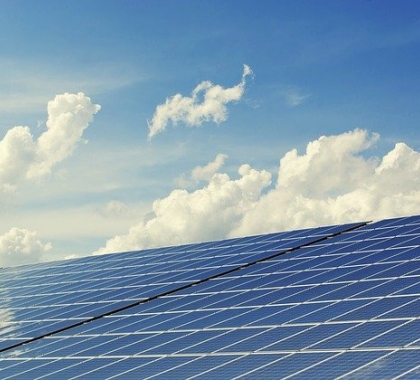The solar energy trend continues throughout the United States as well as the trend of solar energy projects being developed at the local level, either by individual electric utility customers or by electric utilities and communities.
Rich Andrysik, distributed resources and generation specialist for the Municipal Energy Agency of Nebraska (MEAN), held an educational session on the “Basics of Solar Energy” for attendees of the MEAN committee and board meetings in August in Kearney, Neb.
The presentation covered how electricity is generated through solar photovoltaic (PV) cells, different types of solar panels available, typical daily solar generation electric load curve, some of the equipment needed for solar installations, considerations for residential and commercial projects as well as policy and procedure considerations for municipal utilities.
Typical characteristics
The size of a typical solar panel is approximately 3 feet by 6 feet. The panels, whether mounted on a residential roof or ground-mounted, lose efficiency over time at a rate of about 0.5 percent per year, said Andrysik, which results in approximately a loss of 10 percent efficiency over 20 years. Solar panels can be at a fixed tilt or rotate to track the sun’s movement during the day. Panels that track the sun produce about 9 percent more energy annually than fixed-tilt systems, according to Andrysik. However, rotating solar panels do have higher maintenance requirements.
Lower capacity factor
The capacity factor of a typical solar panel varies depending on location. The capacity factor is the ratio of energy produced over time to its maximum nameplate capacity. A typical capacity factor of a solar panel in Iowa is approximately 15 percent compared to around 21 percent in Eastern Colorado, said Andrysik. Compared to other energy sources, solar energy has a low capacity factor. Most of today’s wind farms have a capacity factor above 40 percent and baseload electric generation from a nuclear, coal, or natural gas power plant have capacity factors near 90 percent. Obviously, solar energy is subject to the availability of sunlight, so weather and time of day/night significantly impact the capacity factors.
Residential/commercial solar considerations
Considerations for residential and commercial solar installations include:
- Location of the panels to maximize efficiency. It’s best to place the panels in areas of full sunlight away from trees and tall structures. Also, panels should be directionally oriented to capture the most sunlight.
- Ensure the structure of the roof is adequate if the solar panels will be mounted to a commercial or residential roof.
- Bi-directional meters are needed to meter and bill individual customers for the energy produced.
- Disconnect switches are needed for the safety of electric line technicians working around locally distributed generation systems.
Being proactively prepared
From a municipal utility standpoint, it’s important to be proactively prepared to handle requests from customers seeking to install solar panels for their homes or business. This includes having policies and procedures in place to handle customer requests. MEAN assists its participating wholesale electric participants by having an interconnection policy available to use and Andrysik has made presentations to MEAN participants regarding local solar projects. Other considerations for the municipal electric utility include determining your net metering limit and what rate to pay customers for the excess energy generated from local solar projects.
Community solar projects
Community solar projects, unlike individual resident and commercial projects, benefit from economies of scale. More area is needed for these projects with about seven acres of land needed for one megawatt of energy. Location is important for community projects with the best sites being on level ground, free from shade trees and tall structures, and near a high capacity power line.
MEAN’s Renewable Distributed Generation Policy allows long-term MEAN participants to install renewable electric generation up to two percent of the community’s annual energy needs or 100 kilowatts, whichever is greater.
As far as the cost of solar energy, it varies by location and facility. Typically, larger projects benefit from economies of scale resulting in lower costs. The federal Solar Investment Tax Credit helps lower costs, providing private developers a tax credit for the installation of a solar project, which can allow the savings to be passed onto a municipal utility in the form of a lower energy rate. The federal tax credit is 30 percent off installation costs through 2019 and steps down each year as part of a phase-out plan.

